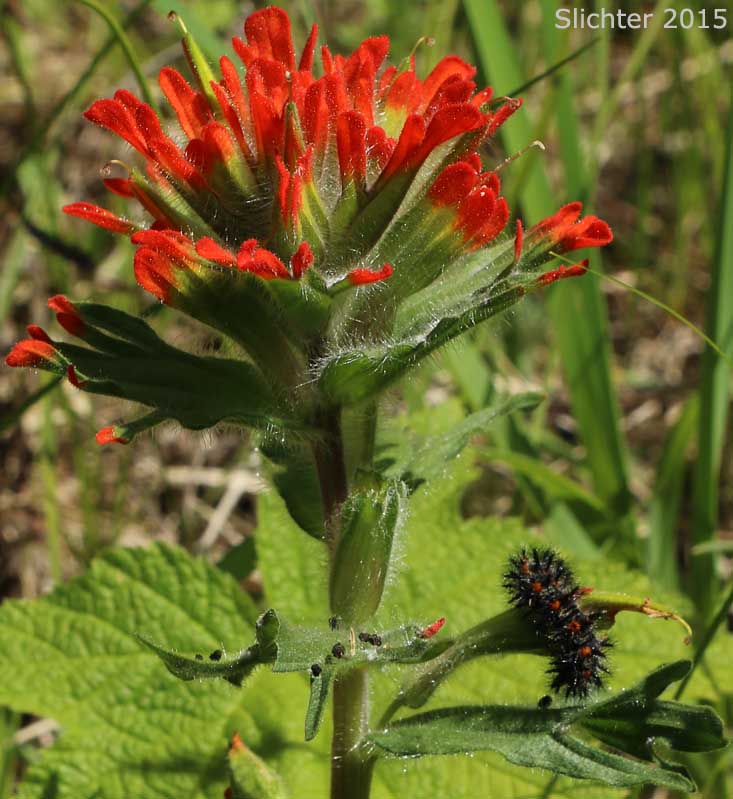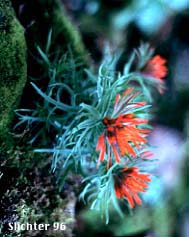#29. Indian Paintbrush

Harsh Paintbrush (Castilleja hispida)
Common Local Paintbrushes:
Castilleja hispida --Harsh Paintbrush (See photo above.)(drier fields
& forest openings). Castilleja miniata (43K) --Common
Paintbrush (moister forest openings). Castilleja rupicola --Cliff Paintbrush
(see photo below.(rocky cliffs of Columbia Gorge & rocky scree in alpine areas).
The leaves are usually lance-shaped with 1-2 pairs of lance-shaped lobes.
Castilleja parviflora (43K) --Rosy Indian Paintbrush
(pink to red paintbrush of alpine areas.)
Castilleja miniata-- Common Indian Paintbrush (reddish flowers). Leaves
have entire margins and are somewhat lance-shaped.
Castilleja rupicola-- Cliff Paintbrush (bright
red flowers and dissected, several-lobed leaves). Usually found on rocky cliffs
in the Columbia River Gorge.
Family Name:
Figwort Family
Habitat:
Open forests to meadows.

Characteristics:
1. Flowers small & green surrounded by bright red, pink, or orange tipped
bracts or leaves. These "flowers" or bracts are clustered at the top of the
plant.
2. Leaves are variable, generally narrow, linear to lance-shaped, 7 often
wtih 3 lobes or forks at the tip (like a pitchfork). A single plant may have
several of the above leaf types!
3. The paintbrush area somewhat parasitic, in that they are usually found
in association with other plants such as native grasses, stonecrops, penstemons,
or lupines. This association involves the roots of the paintbrush penetrating
those of the host plant so that the former can "borrow" the juices of the latter
in order to meet at least part of its nutrient requirements. Paintbrush are
not totally parasitic. They can manufacture some of their own food.
Uses or Importances:
1. Paintbrush is a very pretty wildflower.
2. Local Indians ground it & drank small quantities of it to bring about regularity
in the menstrual cycle. This was done with great caution as large doses could
induce miscarriages.
Paul Slichter

